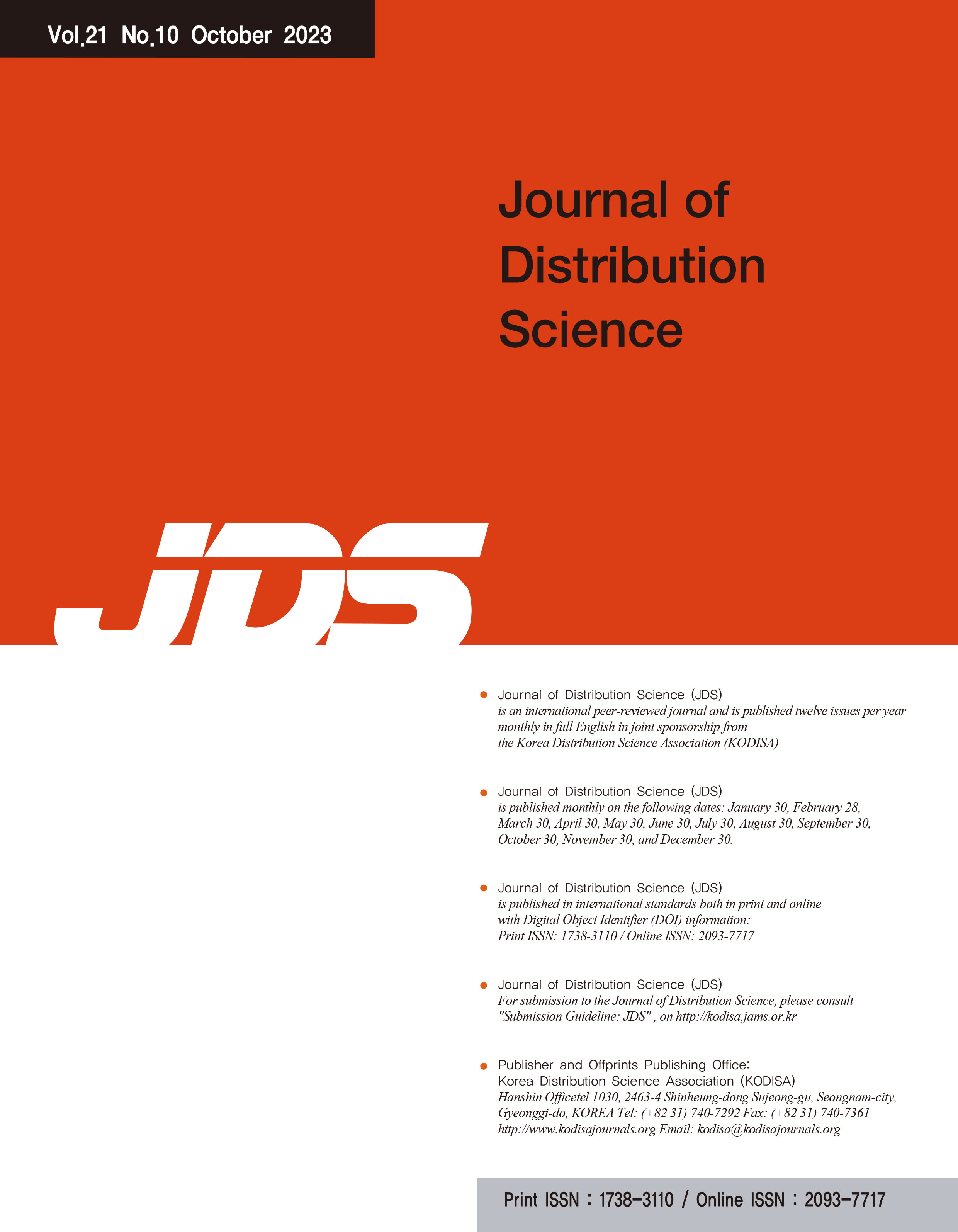- Log In/Sign Up
- P-ISSN1738-3110
- E-ISSN2093-7717
- SCOPUS, ESCI
 ISSN : 1738-3110
ISSN : 1738-3110
A Study on the Sale Estimate Model of a Large-Scale Store in Korea
Kim, Jong-Jin
Park, Chul-Ju
Shim, Kyu-Yeol
Abstract
Purpose - The purpose of this study was to construct a turnover estimation model by investigating research by Park et al. (2006) on the market area of domestic distribution. The study investigated distribution by using a new tool for the turnover estimation technique. This study developed and discussed the turnover estimation technique of Park et al. (2006), applying it to a large-scale retailer in "D"city that was suitable for on-the-spot distribution. It constructed the new model in accordance with test procedures keeping to this retail business location, to apply its procedures to a specific situation and improve the turn over estimation process. Further, it investigated the analysis and procedures of existing turnover estimation cases to provide problems and alternatives for turnover estimation for a large-scale retailer in "D"city. Finally, it also discussed problems and scope for further research. Research design, data, and methodology - This study was conducted on the basis of "virtue" studies. In other words, it took into account the special quality of the structure of Korea's trade zones. The researcher sought to verify a sale estimate model for use in a distribution industry's location. The main purpose was to enable the sale estimate model (that is, the individual model's presentation) to be practically used in real situations in Korea by supplementing processes and variables. Results - The sale estimate model is constructed, first, by conducting a data survey of the general trading area. Second, staying within the city's census of company operating areas, the city's total consumption expenditure is derived by applying the large-scale store index. Third, the probability of shopping is investigated. Fourth, the scale of sales is estimated using the process of singularity. The correct details need to be verified for the model construction and the new model will need to be a distinct sale estimate model, with this being a special quality for business conditions. This will need to be a subsequent research task. Conclusions - The study investigated, tested, and supplemented the turnover estimation model of Park et al. (2006) in a market area in South Korea. Supplementation of some procedures and variables could provide a turnover estimation model in South Korea that would be an independent model. The turnover estimation model is applied, first, by undertaking an investigation of the market area. Second, a census of the intercity market area is carried out to estimate the total consumption of the specific city. Consumption is estimated by applying indexes of large-scale retailers. Third, an investigation is undertaken on the probability of shopping. Fourth, the scale of turnover is estimated. Further studies should investigate each department as well as direct and indirect variables. The turnover estimation model should be tested to construct new models depending on the type of region and business. In-depth and careful discussion by researchers is also needed. An upgraded turnover estimation model could be developed for Korea's on-the-spot distribution.
- keywords
- Sale Estimate Model, Trade Area, Total Consumption Expenditure, Total Trade Area, Sale scale
Reference
Ahn, Sung-woo, Lee, Sang-youn, Kim, Pan-Jin, & Youn, Myoung-Kil (2009). A Practical Study on the New Revenue Estimate Model Of SSM. Journal of Distribution Science, 7(3), 5-24.
Converse, P.D. (1949). New Laws of Retail Gravitation. Journal of Marketing, 14(3), 379-384.
Huff, David L. (1963). A Probabilistic Analysis of Shopping Centre Trade Areas. Land Economics, 39, 81-90.
Huff, David L. (1964). Defining and Estimating A Trading Area. Journal of Marketing, 28(Jul.), 34-38.
Kim, P.J., & Youn, M.K.(2010). Retail Sales forecasting of agricultural products marts in a mid-sized city using the Huff Model. Journal of Food, Agriculture & Environment, 8(2), 945-948.
Kwon, Oh-Chul, Kim, Jin-Seong, Kim, Pan-Jun, Kim, Pan-Jin, Kim, Hong-Seop, Namkung, Suk, Park, Yeung-Kurn, Park, Chul-Ju, Park, Hyoung-Jin, Youn, Myoung-Kil, Lee, Jang-Hwan, Hwang, Hwa-Chul, & Kim, Yoo-Oh (2007). A Note on the Unification on Retail Trade Terminology. Journal of Distribution Science, 5(2), 5-16.
Park, Chul-Ju, Ko, Youn-Bae, Youn, Myoung-Kil, & Kim, Won-Kyum (2006). Prediction of Estimated Sales Amount through New Open of Department Store. Journal of Distribution Science, 4(2), 5-20.
Reilly, W.J. (1929). Methods for the study of Retail Relationships. Austin, Texas: Bureau of Business Research Studies in Marketing, No. 4.
Su, Shuai, & Youn, Myoung-Kil (2011). Using Huff Model for Predicting potential Chiness Retail Market. East Asian Journal of Business Management, 1(1), 9-12.
Youn, M.K., Kim, W.K., Kim, P.J., Lee, S.Y., Shim, K.Y., & Kim, Y.O. (2012). Retail sales forecast analysis of general hospitals in Daejeon, Korea, using the Huff model. African Journal of Business Management, 6(3), 971-977.
Youn, Myoung-kil, & Kim, Yoo-Oh(2007). A Study on the Methodology of Distribution Study in Korea. Journal of Distribution Science, 5(1), 75-88.
- Downloaded
- Viewed
- 0KCI Citations
- 0WOS Citations
